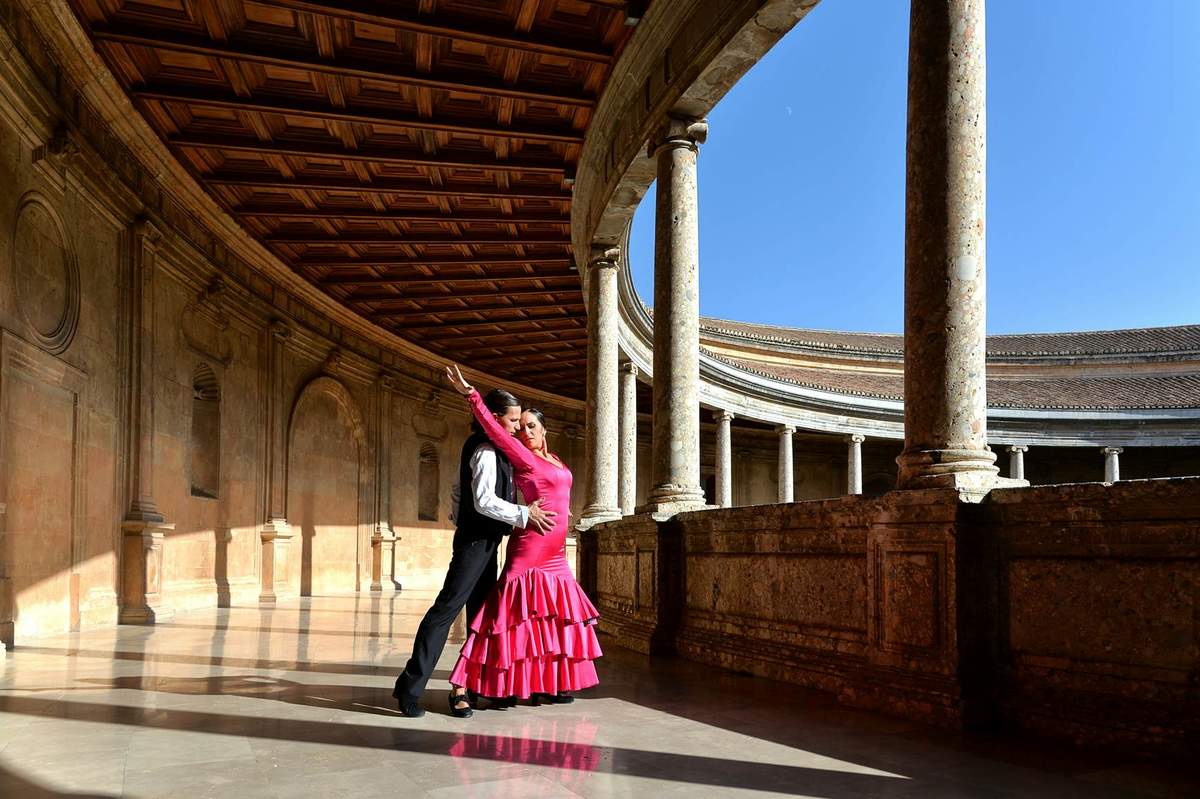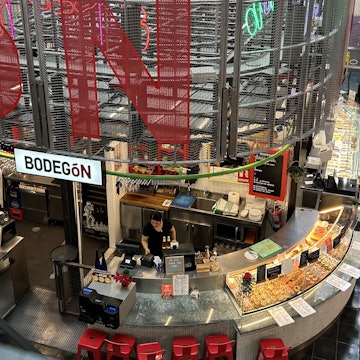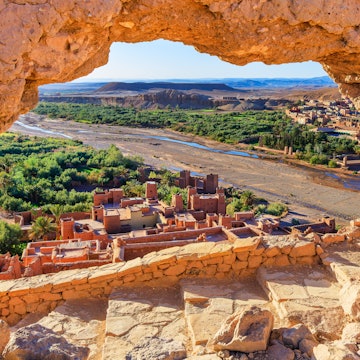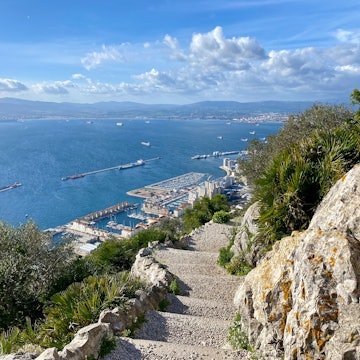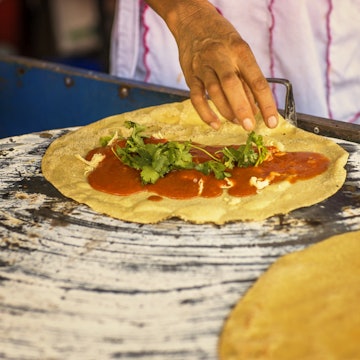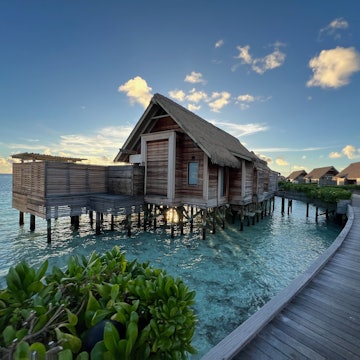
One week of Madrid’s passionate, artistic soul
Sponsored by
Sep 22, 2023 • 11 min read

Why do so many travelers fall irretrievably in love with Madrid? Simple – it’s one of the coolest places on the planet © Eldar Nurkovic / Shutterstock
When it comes to city breaks, it’s easy to see why people fall for Madrid over and over again. The sun-kissed city, capital of Spain, is one of the biggest and most vibrant in Europe, with leafy green parks, an art scene bristling with energy and elegant winding streets for sunset strolls.
This week-long itinerary will take you through historic hidden plazas that buzz with the banter of locals and throw you into cultural hubs and wonky-beamed bodegas. Kick off with a rollicking tapas tour (taking in the oldest restaurant in the world and Hemmingway’s old hangout), then jump from art A-listers to Egyptian temples to leafy rooftop bars in the flip of a tortilla. Arrive hungry and ready to party – Madrid has it all.

Day 1
Kick off your visit where art, architecture and history meet, in the gigantic Royal Palace, the largest functioning palace in Europe. The palace, now used for ceremonies by King Felipe VI and Queen Letizia among other state functions, is absolute opulent maximalism, from the grand staircase made from one piece of San Agustin marble to masterpieces by Goya and Caravaggio to the sumptuous 18th century tapestries. Visit in the morning to beat the crowds.
Nearby, people flock to Almudena Cathedral to be bewitched by the towering, vaulted ceilings, vivid stained-glass and gold-topped turrets. Soak up the silence surrounded by cool granite from the quarries of Colmenar Viejo and stone from Alicante. Finished in 1993, it's a modern wonder which saw no less than six architects working on it during its construction. Don't miss the crypt, a hidden Romanesque Revival gem, crammed with 400 columns each topped with a unique decoration of lush leaves and biblical figures.

Another must-see near the Royal Palace is the Galeria Colecciones Reales. This innovative new gallery bagged ten architectural awards before it even opened its doors. Pop in to admire impossibly intricate 16th century tapestries, ancient gold crowns, elaborately carved walnut carriages and paintings by the likes of El Greco, Ribera, Velázquez and Caravaggio. Don't miss the original plans for the Royal Palace on floor two, commissioned by the King after a devastating fire in 1734.
Finish the tour of this fascinating neighborhood with a quick stroll to Mercado de San Miguel. It’s more than 100 years old but it was scrubbed up recently with an elegant restoration. This jazzy place is the perfect spot to grab a bite, with everything from jamón to artisan tinned fish to Flintstone-style txuleta steaks from old Galician cows.
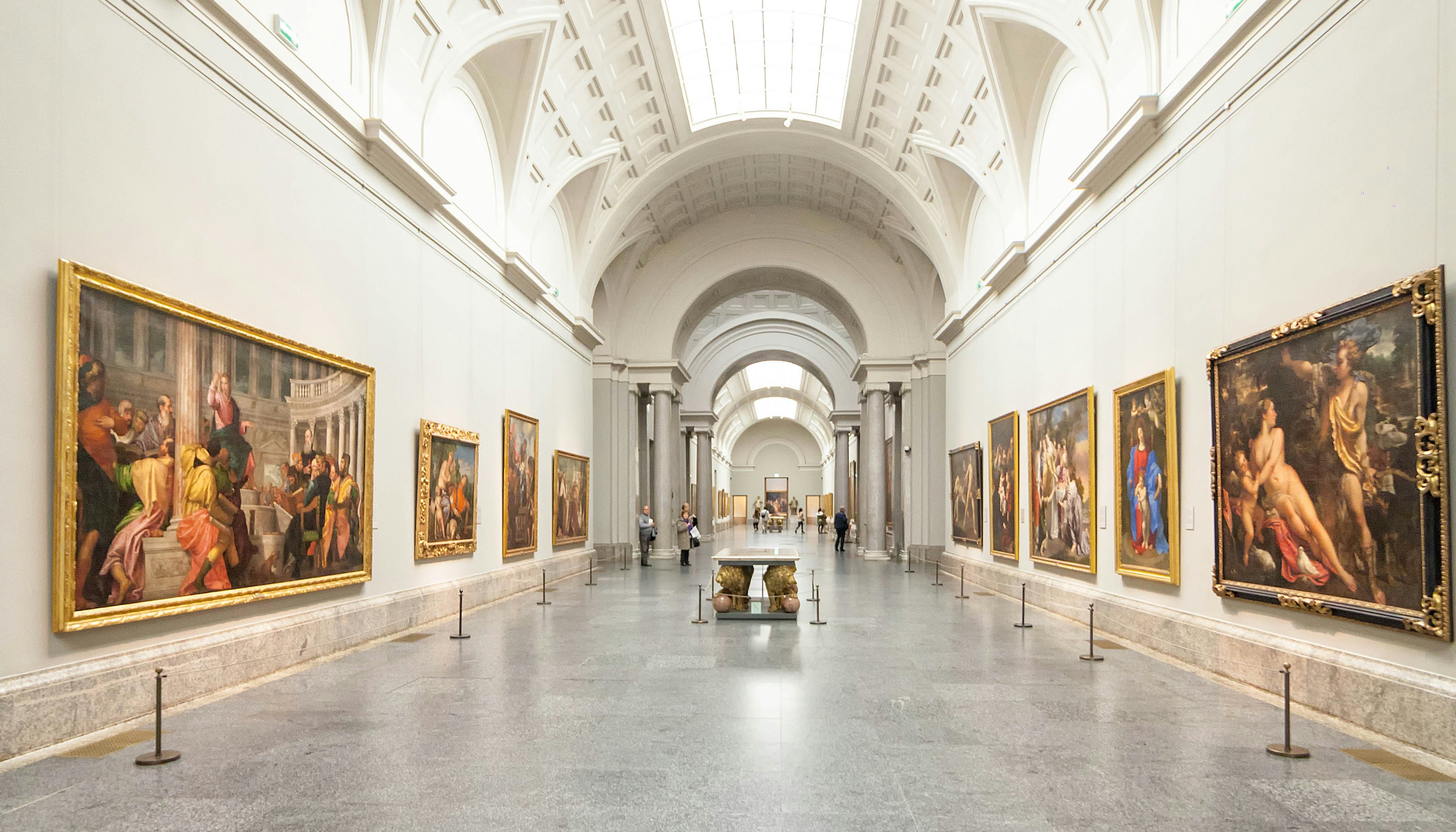
Day 2
Dive into the arts: there’s plenty to peruse. Museo del Prado has a collection so large that only 1/7th is on display at any given time. Short on time? Go find Francisco Goya’s work, a pillar of Prado’s permanent collection. His Black Paintings series is bewitching (some are terrifying), and Perro Semihundido was painted directly onto the walls of his house. Goya adored Diego Velázquez, his iconic Las Meninas is here too. The masterpiece is so densely packed with meaning that people have scarcely stopped studying it since it was painted in 1656.
Get a second art hit with the fantastic Museo Reina Sofía, where Picasso’s Guernica is displayed. Get close enough to see the fissures and craquelure, and don’t miss the museum’s regular free talks, which flesh out the stories behind the acrylic.
Finish the day with a shopping spree on Gran Vía: more than 4,000 feet of brands and boutiques visited by more than 10 million people a year. Want something calmer? Galería Canalejas is a luxurious covered mall with high-end fashion and fine jewelry. And if the budget doesn’t stretch to Hermès and Chanel, the food hall alone is worth a visit for its 13 restaurants, some of which are run by Michelin-starred chefs.

Flamenco is a must in Madrid. The soulful music accompanied by powerful dance has its roots in the Arab, Jewish and traveler communities, and has evolved into an artform admired around the world. Tables at Corral de la Moreria are among the hottest, and get booked months in advance. The venue has lit up with fierce, poetic performances almost every night since its wooden doors were first flung open in 1956.
More raw and fiery shows take place in Tablao de la Villa, set in a beautifully restored 19th century mansion. Guests graze on melt-in-the-mouth jamón ibérico and tender oxtail while dancers stamp and twirl, and cleverly arranged tables means everyone gets a good view. Just across the road, Las Tablas has a more modern feel. Owned by two flamenco dancers, it spearheads the use of theatrical techniques, like lighting rigs and stage design, to highlight the performances.

Day 3
Rub shoulders with the locals in one of Madrid’s coolest barrios, Lavapiés. Settle in here for the day, traversing narrow streets flanked by colorful houses and filled with the smells of busy restaurants. Ogle conceptual art in the cultural center La Casa Encendida and sip funky wine while listening to records at Bendito Vinos y Vinilos.
Madrid has one of the best food and drink scenes in the world, so take a full- throttle tour of the brilliant tapas bars. The best way to enjoy these small sharing plates is to order the restaurant’s specialty – the especialidad de la casa – and swiftly move on to the next location. Not only is it traditional, but it’s also a fun way to explore the full breadth of the capital’s food culture.
First stop, La Ardosa. Founded in 1892, it has wall to wall tiles, gnarled wooden fittings and antique shelves teetering with ancient bottles of vermouth. Prop up the bar with a slice of squidgy-centered tortilla and a refreshing salmorejo.

On to Casa Labra, where the classic marble tables, coffee-colored wood paneling and gorgeous gold lettering haven’t changed in more than 100 years. Inside, newcomers stand elbow-to-elbow with the locals and feast on croquetas with crusts that shatter like glass.
Dinner is served at Restaurante Botín, and it has been since 1725. The secret to its success is the wood-fired ovens; they’re never put out, and they lend a sultry smokey smell to the place. Order charred peppers, artichokes, and their specialty: whole roast suckling pigs. Hemingway was a big fan – he even mentions its cochinillo asado in his books.

Day 4
Madrid might be big, but it’s no urban jungle. The seductively named Landscape of Light is a UNESCO World Heritage Site, and includes the best parks, avenues and monuments in the city. The area evolved with the enlightened idea that everyone should have access to science and the arts, and now public museums and galleries abound.
Start with a walk along Paseo del Prado – it dates to the 16th century and was one of the first tree-lined avenues in Europe open to everyone, no matter their social standing. Admire the grandeur of the Plaza de la Cibeles, home to the iconic fountain with goddess Cybele, before walking through Retiro Park to the quieter, but no less impressive, Real Jardín Botánico to coo over deep purple irises and peachy waterlilies among 5,500 different plant species.
After a day in the sun, it’s time for fun under the lights. Madrid’s cocktail scene puts the best of the city’s passion and art into a perfect sip. Hit up some of the city’s best spots the way Ernest Hemingway did on his visits (okay, maybe a little more responsibly).
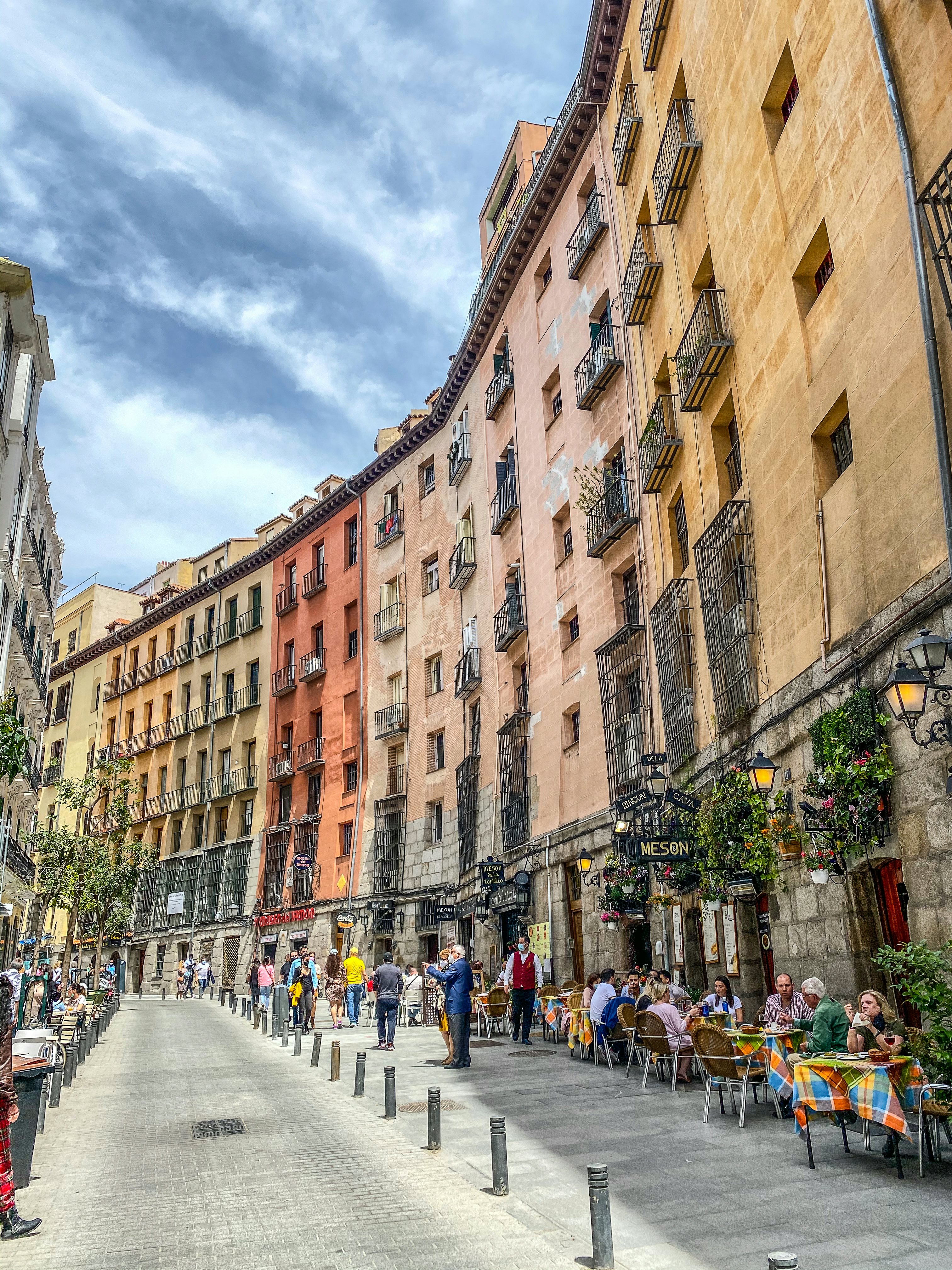
With its bar slicked with silver scales and rippled ceiling like the surface of a river, Salmon Guru is wild and intoxicating, even without its renowned craft cocktails. Argentine spirit-lover Diego Cabrera is the mastermind behind it, and often pours drinks behind the bar. The menu features mixes like Manhattan from the Barrel; a burnt butter rum bomb with dry vermouth and sherry cream, or Chipotle Chillon made with mezcal and a zippy chipotle syrup.
Elegant and understated, the popular 1862 Dry Bar in Malasaña serves classics to a tee. It gets its name from the year that the first ever cocktail recipe book was published, written by the famous Jerry Thomas. They’re mad about the history behind each drink, and are known for making a mean Gin Fizz, which they shake up with small batch Gin Xoriguer from Menorca, lemon, egg white and soda.
Go to the restroom at Hotel NH Collection Madrid Suecia and you're in for a surprise. The unassuming lavatory door opens into a secret cocktail den called Clandestine. The speakeasy’s tight menu is perfect for peeling away from the masses and losing track of time. At the sultry, low-lit bar, couples perch on red velvet stools and toast with dry martinis and the signature Suecia 76, made with gin, lime and champagne. The hotel restaurant has a beautiful terrace with excellent views of the city.
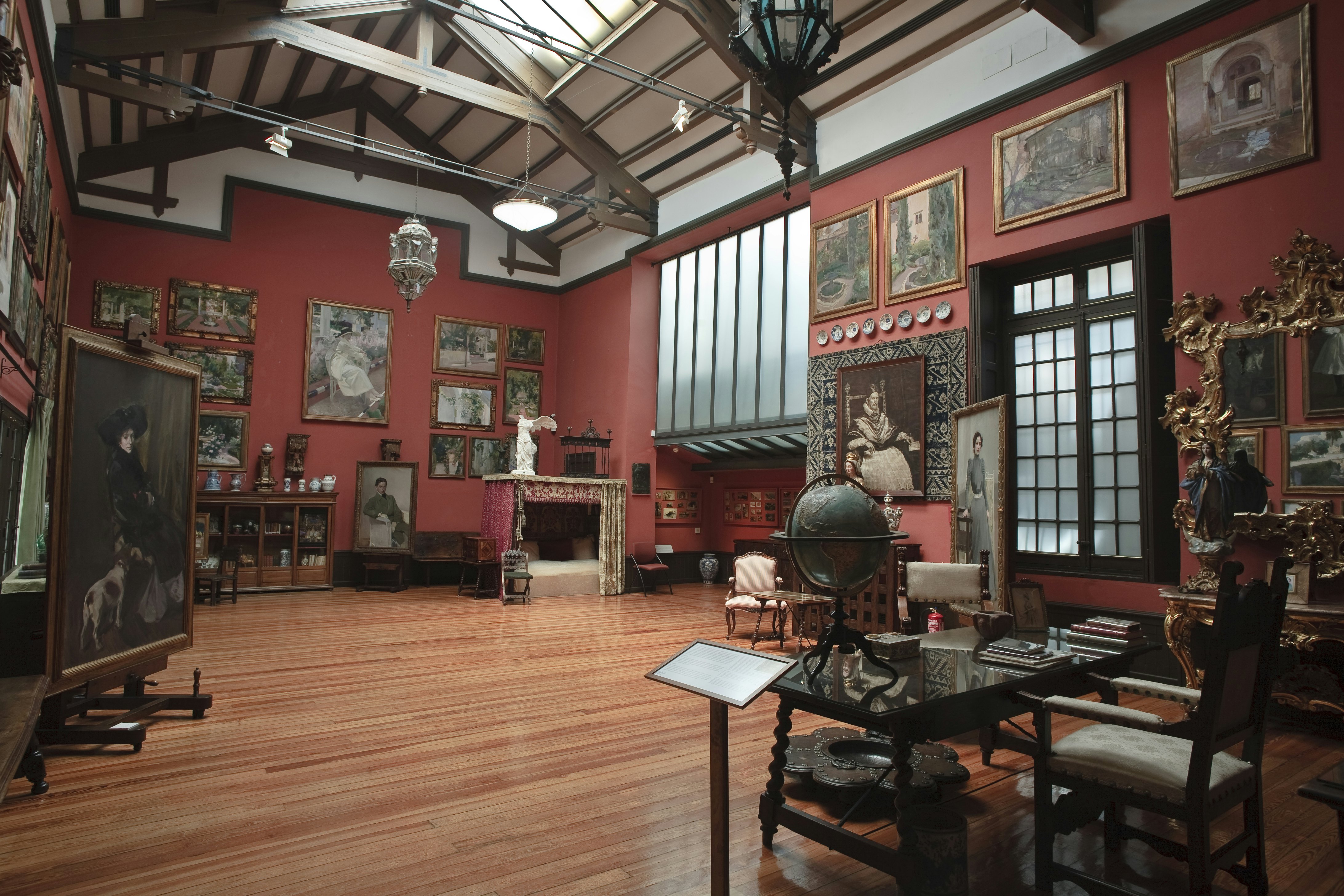
Day 5
One of Madrid’s lesser-known museums is the old home of Spain‘s legendary artist Joaquín Sorolla. It’s where he created many of his greatest works, and his home was bequeathed to the public to inspire the next generation of artists. Museo Sorolla is a leafy oasis with a relaxing courtyard, paintings that seem to radiate light and an astonishingly preserved studio with the artist’s paint brushes still in their pots.
Another remarkable house museum is the Palacio de Liria. The Alba family are descended from 12th century nobility and have opened their palatial home to the public for everyone to enjoy the opulent style and impressive art collection built up over the ages. Every corner is meticulously decorated with fine porcelain, iconic art, silk wallpaper and crystal chandeliers. A carefully selected playlist of classical music accompanies every visit; each song is chosen for a historical, sometimes personal, tie to the home and its family. Don't miss Goya's famous portrait of the Duchess of Alba, dressed in a flowing white and red dress.

Madrid takes its theatre very seriously, nowhere more so than Teatro Real. Open since 1738, it’s been souped up with a €100 million renovation. Intricate overlapping platforms mean this stage can transform in the blink of an eye – it makes for some breathtaking set designs. The theatre is just a short walk from the Puerta del Sol, the central square of Madrid and a buzzy place to end the evening.

Day 6
Three of the city's most charming neighborhoods are conveniently close to each other and perfect for a morning walking tour. Chueca, Malasaña and Salesas are where the buzziest bars, most atmospheric restaurants and coolest cafes can be found – just take a stroll through the winding, picturebook streets to stumble upon them.
Hop between cutting edge restaurants and ancient tapas bars in Malasaña. Spot bookshops and vintage stores on Calle del Espíritu Santo before strolling along Calle Fuencarral, dotted with big brands and Spanish boutiques. Chueca is full of romantic architecture and lively backstreet bars – thousands flock here every year for an unbeatable Pride Festival.
Traverse the streets – which always seem to be sun-soaked – to find stylish Salesas with its design-led cafes. There's an eclectic line-up of shops scattered around here too, from cool new designers to centuries-old artisans. It's all just a hop and a skip from the center of Madrid, a living museum of elegant Madrileñan architecture, ready to get lost in.

Time for a spot of sunbathing. Spread over 292-acres, it’s easy to find a quiet corner to lay out a blanket in Retiro Park. There are all sorts of wonders here: the oldest tree in the city, a huge rose garden and even a manmade lake with boats to hire (two of which are wheelchair accessible).
As the sun sets, the best way to see the city is from up high, better yet from an opulent rooftop like the Hyatt Centric Gran Vía Madrid, or La Terraza at the five-star The Principal Madrid. It’s where couples go to drink gin and tonics under rose-red parasols and potted olive trees, while peering down at the crowds on Gran Vía. There are more top views from Ginkgo Sky Bar on Plaza de España, a hidden oasis of ice-cool cocktails, tacos and sushi where you can squeeze enjoyment out of every last hour of the day.

Day 7
Last chance to fill up on Madrid’s famous tapas. There’s still hundreds waiting to be discovered, so dive into the characterful, bustling neighborhood of La Latina. Juana La Loca has the best tortilla – all gooey with caramelized onions, and Taberna La Concha is a quaint little tavern that’s normally packed. Find space at the marble bar and order briny anchovies and vermouth.
While in La Latina, don’t miss the miniscule wicker shop Espartaria. Juan is the third-generation owner and his family has been weaving baskets and bottle holders by hand since 1927. Feeling fancy? Buy a merino wool cape from Capas Seseña, a ruby-red fronted shop founded in 1901 which has warmed iconic shoulders, from Picasso to Bruce Springsteen.
There’s an Egyptian temple just a 20-minute stroll away. Templo de Debod is a monument dating to the 2nd century BCE, gifted to Spain by the Egyptian government. It’s a magical spot to watch the sunset, with panorama views over the city.

Madrid is a city full of passion – evident in the warm and welcoming people, vibrant arts, thumping rhythms, daring recipes, beautiful architecture and green spaces, and buzzing nightlife. Why do so many travelers fall irretrievably in love with the city? Simple – it’s one of the coolest places on the planet.
Sponsored by Madrid Tourism
As a travel entertainment and inspirational media outlet, we sometimes incorporate brand sponsors into our efforts. This activity is clearly labeled across our platforms.
This story was crafted collaboratively between Madrid Tourism and Lonely Planet. Both parties provided research and curated content to produce this story. We disclose when information isn’t ours.
With sponsored content, both Lonely Planet and our brand partners have specific responsibilities:
-
Brand partner
Determines the concept, provides briefing, research material, and may provide feedback.
-
Lonely Planet
We provide expertise, firsthand insights, and verify with third-party sources when needed.





